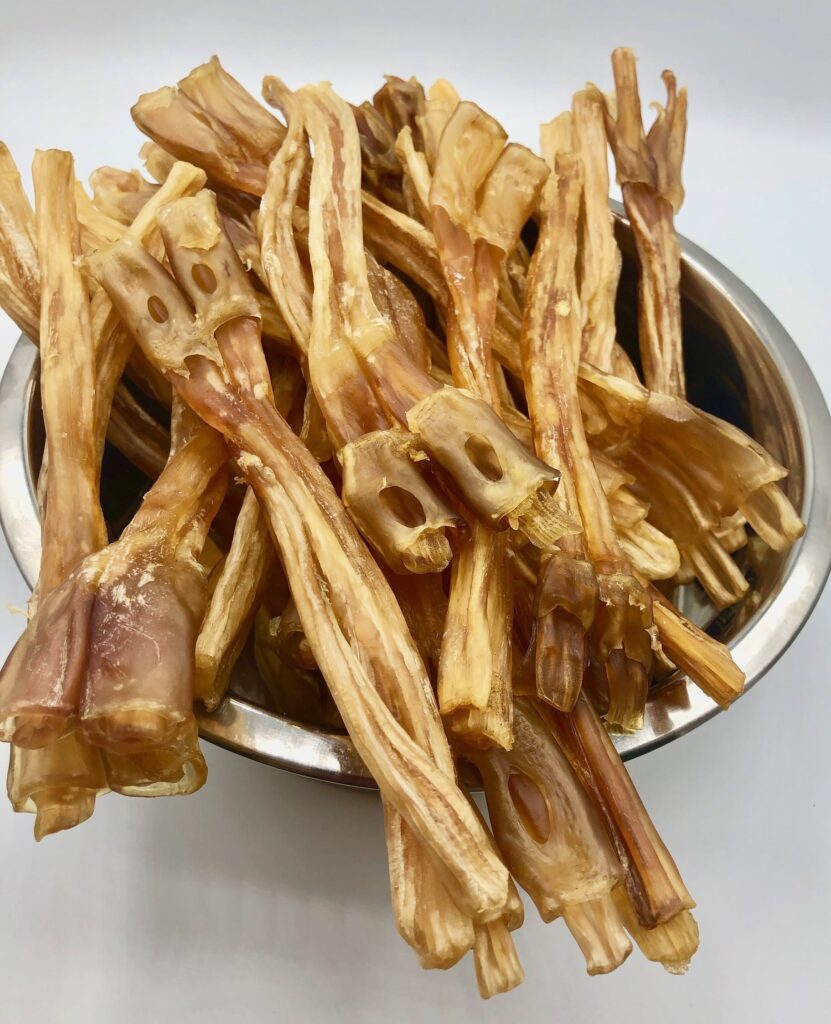Beef Tendon is a popular cut of meat in Asian cuisines such as Chinese, Japanese, Korean and Vietnamese. It is often used to create thick and flavorful sauces and stews in dishes such as pho.
Tendons are a great source of collagen, which helps promote skin, hair, nail and joint health. However, they are difficult to cook due to their tough and fibrous nature.
Overview of Beef Tendon as a Food Source
Beef Tendon is a strong fibrous band of tissue that connects muscle to bone. It’s tough and takes hours of boiling to make it tender and edible.
It has a mild beef flavor and a gelatinous texture with a mouthfeel similar to pork belly. It’s a common ingredient in Asian soups and stews, lending them a depth of flavor.
You can find beef tendons in specialty meat markets or butcher shops. They’re a good addition to your stock pot or any dish that calls for beef.
Culinary Uses and Traditional Dishes
Beef tendons are a popular ingredient in Asian cuisine. They add a deep, beefy flavor and a chewy, gelatinous texture to soups and stews.
They can be found at Asian markets, butcher shops, or even a farmers market. They’re a pleasantly cheap option, especially when compared to other cuts of meat like brisket.
The most common method of cooking tendon is to boil it for hours until it is tender and edible. If you want to reduce the amount of time it takes, simmering in a pressure cooker can speed up the process.
Availability and Market Trends
Beef Tendon is a hard to find product in supermarkets but is a staple at many Asian and Mexican grocery stores. They typically sell the tendons by the pound.
The meat department at your local butcher shop may also have some in stock. They are very affordable and can be used in soups, stews and stocks.
In addition to their taste and availability, beef tendons are also being recognized as a natural and organic product that is growing in popularity. University of Nebraska meat scientist Chris Calkins believes that more consumers are demanding convenience and are seeking products that are easy to prepare.
Health Benefits and Concerns
Beef Tendon is an excellent source of protein. This protein helps to keep muscles strong and supports the synthesis of DNA and hormones.
It is also high in iron, which helps prevent anemia. In addition, it is rich in calcium, phosphorus and vitamin (B1, B2), all of which contribute to healthy bones and joints.
It is also a good source of glucosamine and chondroitin, two essential compounds for promoting the health of your dog’s bones and joints. These essential compounds help to strengthen tendons and ligaments by reducing inflammation.
Sustainability Issues
The harvesting and consumption of beef tendons is not without its sustainability issues. Meat production requires large amounts of energy, water and land, and contributes to climate change by releasing greenhouse gases into the atmosphere.
Meat production also contributes to air pollution by releasing nitrogen and phosphorus into the atmosphere. Livestock produce significant quantities of manure, which contaminates water courses and releases methane into the atmosphere.
While technological changes can help to reduce meat’s impact on the environment, consumers must also make changes to their diet. Choosing meats from small farmers and eating more plant-based foods can help to mitigate the negative effects of meat production.

